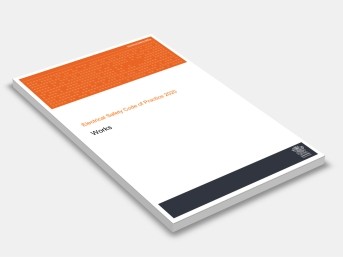Electrical Safety Code of Practice 2020: Works
Electrical Safety Office
This Code should be read in conjunction with the ES Act, the ES Regulation, the WHS Act, the Work Health and Safety Regulation 2011 (the WHS Regulation) and other relevant codes of practice.
In providing guidance, the word ‘should’ is used in this Code to indicate a recommended course of action, while ‘may’ is used to indicate an optional course of action. The terms ‘health and safety’ and ‘work health and safety’ are used in this Code to indicate a wider application than just ‘electrical safety’. However, ‘electrical safety’ should be taken as being included when the terms ‘health and safety’ and ‘work health and safety’ are used.
This Code also includes various references to provisions of the ES Act, the ES Regulation, the WHS Act and the WHS Regulation which set out the legal requirements. These references are not exhaustive. The words ‘must’, ‘requires’ or ‘mandatory’ indicate that a legal requirement exists and must be complied with.
This Code also includes various references to standards (using the designated ‘AS’) and joint standards (using the designated ‘AS/NZS’). In this Code, unless otherwise stated, a reference to a standard (or joint standard) is a reference to that standard (or joint standard) as in force from time to time under that designation. For example, ‘AS/NZS 3100’ is a reference to the joint standard that is currently in force under that designation.
Contents:
1: Introduction
2: The Risk Management Process
3: Protective Earthing
4: Design And Installation Of Underground Electric Cable Systems
5: Maintenance Of Supporting Structures For Lines
Appendix A: Meaning Of Terms used In This Code
